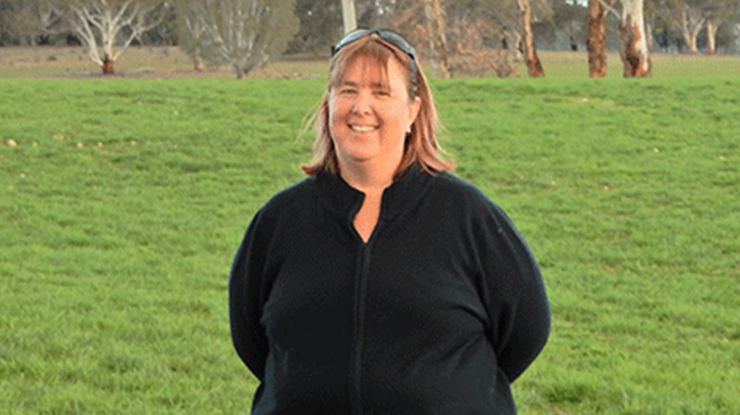Lime lifts clover at Overdale
06 August 2021

Applying lime to an established pasture has paid dividends in terms of clover vigour and production for Wimmera Merino producers Sue Holden and Malcom Nicholson.
Sue and Malcolm run a 5000 ewe fine wool enterprise with Sue’s father George and stepmother Cath Holden on ‘Overdale’, a 3200ha property east of Stawell, Victoria.
While the couple regularly applied lime to paddocks before sowing new pastures, their involvement in a Meat & Livestock Australia funded Healthy Soils Group has been the catalyst for using lime to reinvigorate established pastures.
The group held several sessions in 2020 to discuss soil management strategies and ideas. One of these was a session outlining issues associated with soil acidity and using lime.
Due to challenging seasons in the past, Sue, Malcom and family had undertaken extensive pasture improvement by sowing phalaris based pastures and dryland lucerne.
“We were struggling to get sub clover going in newly sown phalaris-based pastures,” Mal said.
“We were having issues with false breaks at the start of the season triggering sub clover germinations which didn’t survive, and then we were dealing with springs cutting out early which was affecting the sub clover seed set.
“When we looked at our established pastures we could see that the sub clover was struggling.”
Sue said lime applications before sowing new pastures had been part of the pasture improvement program since 2006, but the couple had not considered applying lime to older established pastures until taking part in the Healthy Soils Group.
“We have hilly country with light buckshot soils and our pH ranges from 4.6 to just over 5, and can have high aluminium levels.”
“After hearing the speakers we decided to give the theory a test run so we picked one of the lighter paddocks with no history of lime applications and applied 2.5t/ha of lime at the end of the autumn to an established phalaris based pasture with some sub clover,” Mal said.
The paddock has been grazed heavily and sprayed with MCPA to take out erodium in autumn before the lime was applied and then grazed again before being locked up for spring.
“The response was obvious - the clover was far more vigorous, producing a lot more dry matter and was a completely different colour,” Mal said.
“We had comments from neighbours because they could see the difference in the paddock from the road.
“I dug some of the clover up and there was great nodulation on the roots which will improve nitrogen fixation. The plants also flowered well which will hopefully result in a promising seed set for next year.”
The experience has Sue and Mal reviewing their paddock histories as a number of their pastures which were sown 10-20 years ago when wool prices were low have never been treated with lime.
“Given the response we achieved by applying lime to an established pasture this year, we will now look at treating more of the established perennial pasture which have some sub clover and the capacity to respond to lime,” Sue said.
Treating established pastures with lime is looking to be a highly cost effective way of extending the productivity of established pastures according to Mal.
“Resowing a pasture costs us around $300/ha, whereas applying 2.5 tonnes/ha of lime to an established pasture is about $162/ha.”
The potential to apply lime to responsive established pastures across the property is now an option to improve pastures growth, clover performance and nitrogen fixation Sue said.
“We have about 1200ha of phalaris based pastures and will be looking at applying lime to responsive established pastures.
“We also have lots of hill country and light soils which are prone to erosion so need to be optimising pasture cover.
“My father George invested in a lot of soil conservation work on the farm in the past and we have made changes to our grazing management, are moving to land class fencing and looking at stock containment as we work to improve our farm management.
“Being part of the Healthy Soils Group has given us the opportunity to look at how we could address some of our soil issues and test solutions.
Perennial Pasture Systems coordinator Rob Shea said the response to the Healthy Soils Group has been extremely positive, with many producers in the area interested in topics around soil pH, soil nutrition, grazing management and pasture species.
“Productive soils carrying persistent pastures are the backbone of a grazing business,” he said.


